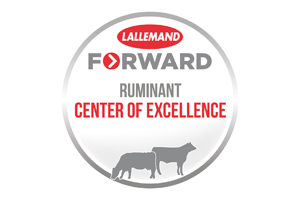Lallemand and Texas A&M AgriLife announce partnership

Lallemand Animal Nutrition and Texas A&M Agrilife Research announce a collaboration to be launched at the McGregor Research Center in Texas. The partnership is part of Lallemand’s Research Centers of Excellence program, to Forward the development and innovation of microbial solutions.
This collaboration is one of two dedicated to product applications for beef, dairy and small ruminant animals. The work completed at these locations focuses on continuously documenting the mode of action, biomarkers of efficacy and benefits of existing yeast and bacteria strains. The researchers also are working toward a better understanding of the microbial ecosystems, solutions and applications to support sustainable animal production, says Mathieu Castex, PhD., Global Research and Development Director. “In particular, we are aiming to document microbial solutions that can help to answer the modern challenges of dairy and beef production ─ maintaining optimal production while enhancing animal well-being,” he adds.
Ruminant and silage research locations
Lallemand Animal Nutrition Centers of Excellence dedicated to ruminant and silage research are located in the following locations:
- National Institute for Agronomic Research (INRA) – Clermont-Ferrand and Theix, France
- William H. Miner Agriculture Research Institute – Chazy, NY, United States
- Biotechnology Research Institute of the National Research Council , Montreal, Canada
Kerry Barling, DVM, PhD, Global Manager of Beef Technology with Lallemand Animal Nutrition helped select Texas A&M AgriLife Research for this partnership based on their vision for supporting animal agriculture. “The research completed at the McGregor facility, along with our other Ruminant Centers of Excellence, will be a combination of strain selection; identification and characterisation; as well as in vitro and in vivo testing.”
Primary goal to develop sustainable solutions for beef cattle producers
“We are excited about our collaboration with Lallemand Animal Nutrition,” says Dr Craig Nessler, Director of Texas A&M AgriLife Research. “At our McGregor Research Center, our primary goal is to help develop sustainable solutions for beef cattle producers in Texas that can have global utility. Working with industry partners like Lallemand gives us the opportunity to work alongside them in characterising products and identifying knowledge gaps so that innovative solutions can be identified, developed and deployed.”











